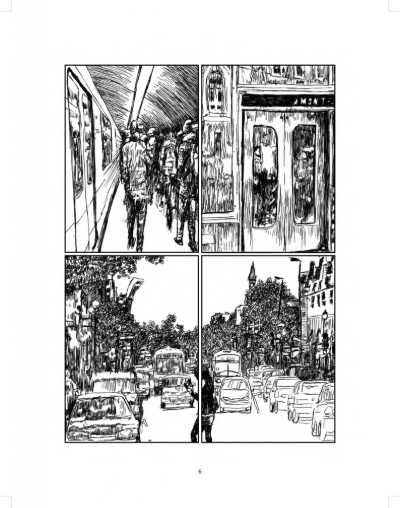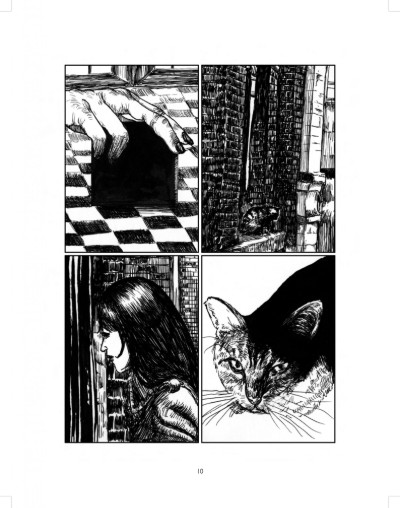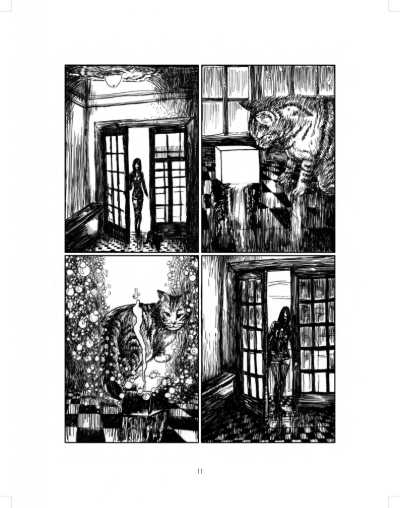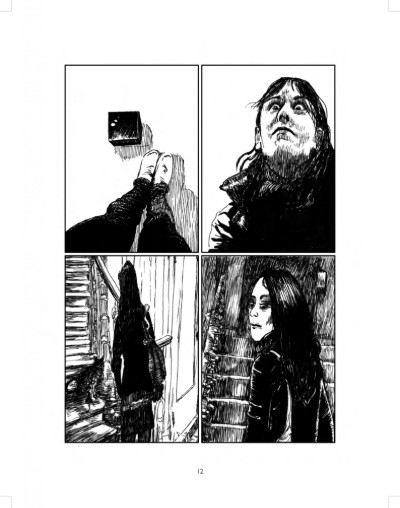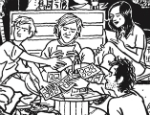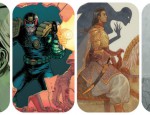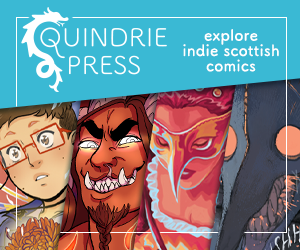A quick online search for the word “Helem” – the name of Stanley Wany’s eerie graphic journey through the psyches of two lost characters – reveals that the name has the dual meanings of “dreaming” and “healing”. A most appropriate choice of title for Wany’s recent graphic novel from Canadian publisher Conundrum Press, given its exploration of two lives at critical juncture points through the lens of their vast sprawling dreamscapes.
Helem was created after a period of sleep deprivation while Wany was experiencing hallucinatory states, something which is very much mirrored in its approach to its depiction of themes of loss, confusion and despondency. Two principal characters make up its focus. One is a young woman struggling to deal with the loss of her sister to suicide and the conflicting feelings that tragedy has evoked. The other is a man who, at thirty years old, has lost his way and realised after ten years of working in a call centre that life is passing him by.
Most of Helem is told without words apart from a couple of brief but key sequences that elaborate on both main players’ personal situations. Without exposition so much about the protagonists, their lives and their emotional states must be communicated by Wany through body language, by the environments the characters move through, and in the reflective pauses from reality that are provided in the metaphor of the extended dream-like sequences that make up much of the book.
Helem then is a graphic stream-of-consciousness as worlds merge in and out of each other, one surreal scenario evolving and emerging from another, the consciousnesses and thought processes of both characters communicated through a symbolism that is both oblique and yet, on a visceral level, strangely connective too. This is one of those narratives that asks us to bring something of ourselves to it; as such every reader will take something different from it, reacting and interacting with its pages in distinct and individual ways.
It’s an unconventional way to examine ideas of solitude, grief, finding oneself and acceptance but that’s also the greatest strength of Helem. Wany’s grainy, moody pages and refusal to spoonfeed his readership make this a very instinctual read as we are asked more to experience and embrace the dream visions that it presents more than we are to strictly interpret them. To feel the book as much as to read it. While most pages have a standard panel structure this only makes the vividness of events all the more powerful and haunting when they are opened up into wider spreads. Even in the scenes set in a more concrete reality faces and perspectives can distort, suggesting our mundane waking world is forever imbued with a dreamlike essence, just waiting to slip into something fantastic or nightmarish.
Taking us into its characters’ internal worlds in ways in which only comics could, Wany’s Helem yet again underlines that Conundrum Press are the most underappreciated publisher in the indie world. I won’t stop making that observation in BF reviews until that situation changes for the better so get used to it. In the meantime check out more coverage of Conundrum’s books here at Broken Frontier.
Stanley Wany (W/A) • Conundrum Press, $20.00
Review by Andy Oliver






